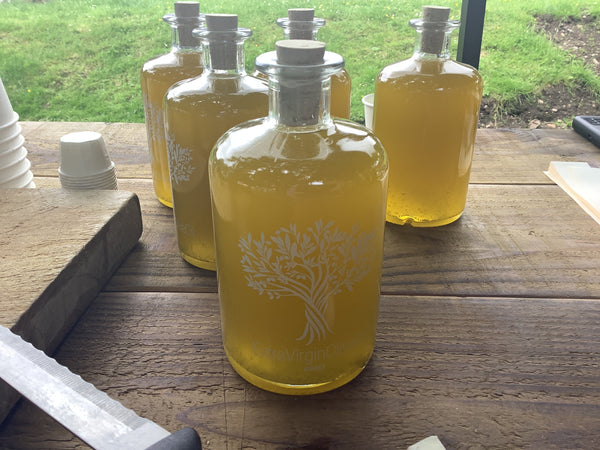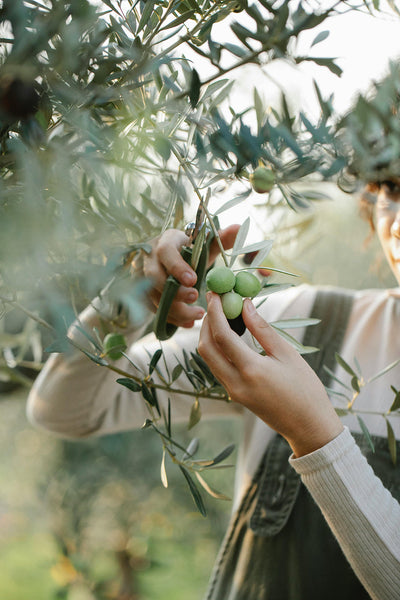From Myth to Masterpiece: The Olive Tree Through Art & History
14/10/2025

The olive tree is more than just the source of our beloved Extra Virgin Olive Oil — it is a living emblem, woven deeply into myth, culture, faith and visual art down the centuries. At Extra Virgin Olive Oil Direct, we often celebrate not only the flavours in the bottle but also the stories behind the tree itself. In this post, let’s wander the olive-groved paths of history, discovering how artists and civilisations have immortalised this humble yet majestic tree.
1. Ancient Roots: Symbol, Myth & Ceremony
-
In ancient Greece, the olive tree was sacred to the goddess Athena. According to myth, Athena’s gift of the olive tree to the city of Athens won her patronage over Poseidon. The citizens chose the olive tree, valuing its fruit, oil, wood and life-giving shade.

-
The olive branch also became a powerful emblem of peace and victory in classical Greece and Rome. The olive branch is still universally recognised as a symbol of peace.
-
Beyond the Mediterranean, the olive appears in religious texts as a bridge between divine and earthly realms. In the Judaic-Christian tradition, when the floodwaters recede in the story of Noah’s Ark, a dove brings back an olive leaf to signal new beginnings.

-
In Islam, the olive tree is mentioned in the Qur’an (e.g. the “blessed olive tree, neither of the east nor of the west”) as a symbol of purity and illumination.
Because of its durability, usefulness and longevity, the olive became associated with prosperity, wisdom, peace and continuity.
2. Olive Trees on Canvas: Artistic Evocations
Over the centuries, artists have used the olive tree not just as a botanical subject, but as a lens to explore spirituality, human endurance, landscape, and light.
Vincent van Gogh
Van Gogh’s series of Olive Trees (1889) are especially famous. Created during his stay at the asylum in Saint-Rémy-de-Provence, they are imbued with both emotional intensity and reverence for nature. He saw olive groves as sacred, and used them to explore themes of life, death, and connection with the divine.
In “Women Picking Olives,” he captures the daily labour of harvest beneath twisted branches, a merging of human work and organic rhythm.

Salvador Dalí and Others
Surrealist master Salvador Dalí also painted olive trees — in 1922, he depicted them around his Catalonian home in Cadaqués, drawing from the Mediterranean landscapes that shaped his visual world.

Other painters through history have used olive groves to evoke quiet contemplation, rustic life, or symbolic resonance (for peace, endurance, rootedness).
3. Olive Trees in Modern and Political Imagery
-
The olive branch continues to be used in logos, flags, emblems and public art to denote peace, unity, or reconciliation. For example, the United Nations emblem includes a world map surrounded by olive branches.

-
In contemporary political and cultural discourse, olive trees often symbolize heritage, resistance, and land-connected identity — for instance, in the Palestinian context where olive groves are deeply tied to community, memory, and rights.
-
UNESCO has even declared 26 November as World Olive Tree Day, acknowledging the tree’s global importance for culture, ecology, and human sustenance.
4. Why It Matters for Us (and You)
At Extra Virgin Olive Oil Direct, our passion is grounded in more than taste — it’s rooted in stewardship, legacy and respect for the land. When you pour a drizzle of olive oil, you partake in a tradition that stretches back thousands of years — one that artists, philosophers, poets and everyday people have revered.
Each bottle is a thread in a tapestry: of Mediterranean light and soil, of human care, of deep history.
We invite you to see not just the flavour, but also the story — the living olive trees, their weathered barks, their harvests, and their symbolism in the human imagination.
Ready to be part of history?
Discover our Extra Virgin Olive Oil and Subscribe here!




